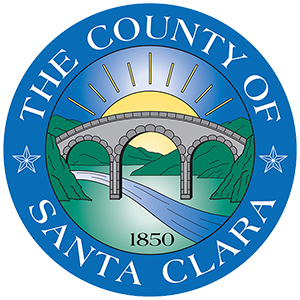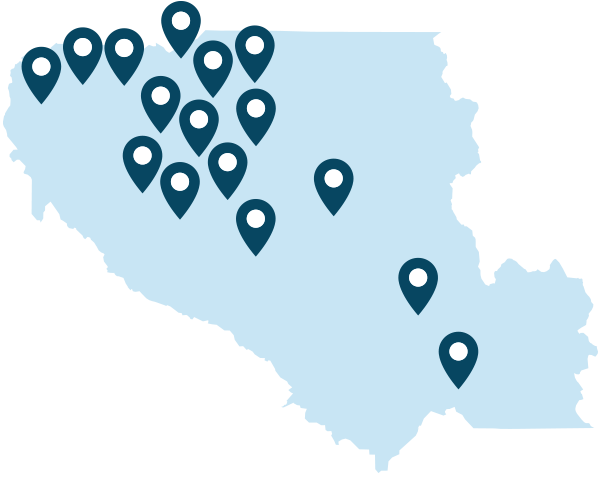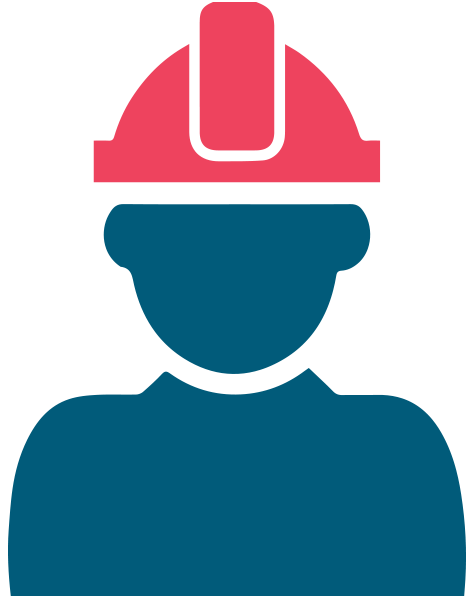Ramping Up the Production of Deeply Affordable Housing
Housing ends homelessness, and the coalition has understood that they must find ways to vastly expand affordable housingSubsidized housing where rents are set at a below-market rate based on the tenant’s income. There are many different types of affordable housing — units are typically designated based on a tenant’s income level (i.e., low-income vs. extremely low-income) and certain types of affordable housing may also be reserved for a specific demographic (i.e., seniors or veterans). Deeply affordable housing refers to developments or units where rents are kept particularly low and are intended to serve the lowest-income residents in the community. options throughout Silicon Valley in order to make meaningful progress in addressing homelessness. As a result, one of the coalition’s primary strategies has been to ramp up production and development of deeply affordable housing in Santa Clara County – and particularly extremely low income and supportive housingA type of housing unit or program that combines affordable housing with support services (for example, mental health, employment, or peer support services) that has proven successful in helping homeless individuals become and stay housed. Supportive housing programs can come in many forms, including long-term programs (i.e., Permanent Supportive Housing) and shorter-term support (i.e., Rapid Rehousing). units. However, developing this kind of housing – particularly, at scale – comes with a host of challenges, and this coalition’s success has only come about due to a deep and concerted effort to get a wide range of stakeholders to work together in support of this key strategy.
Building More Deeply Afforable Housing
The Unique Ecosystem of Partners Working Together in Silicon Valley


- The County’s 2016 Affordable Housing Bond has provided $950M in dedicated funding for ELI, VLI and Supportive Housing
- The County also provides ~$20M in ongoing funding for supportive housing


- 10 cities/public entities have provided land and funds towards deeply affordable housing development.
- In particular, the City of San Jose has allocated ~ $ 300M, with 45% of these funds dedicated to ELI or PSH Units.

6 non-profit service poviders are helping provide on-site, wraparound services and case management at new deeply affordable housing developments.

15 affordable housing developers are helping construct and coordinate all activites at new deeply affordable housing developments.

Destination:Home has partnered with a number of private sector partners – including Apple and Cisco – to provide $70M to fill funding gaps and respond to other unmet needs in the ecosystem.

Housing Authority
The Housing Authority has allocated more than 3,000 Project Based Vouchers to provide dedicated operating revenue for new deeply affordable developments.
Aligning the Leaders of the Coalition
Developing affordable housing for the lowest-income and most vulnerable members of our community is no easy task, and it was clear that realizing this goal would require all of the coalition’s leaders to align and contribute to this shared goal. And the first critical task was coming together to secure funding for this work (read more about the coalition’s efforts to secure new sources of funding).
The first big win came in 2016, when the County of Santa Clara proposed and secured voter support for the Measure A affordable housing bond. In addition to providing $950 million in new funding for affordable housing, the Board of Supervisors set aside the vast majority of that funding for extremely low-income housing, permanent supportive housing and rapid rehousing – jumpstarting the effort to focus on the development of deeply affordable housing.
The voter’s stamp of approval provided a key catalyst to really start ramping up efforts to build more deeply affordable housing production, but it was clear that the County could not produce housing at-scale working alone with just this one tool.
As key leaders of the coalition, the City of San Jose and Santa Clara County Housing Authority quickly stepped up and agreed to allocate significant funding to support deeply affordable housing development in alignment with the goals of Measure A. Since 2020, the City of San Jose has invested over $300 million in affordable housing production (including proceeds from its 2020 Measure E transfer tax), with 45% of that going to extremely low income and supportive housing, and has identified several properties to be developed into affordable housing. The Housing Authority likewise set a 45% development target, and has also allocated approximately 3,000 of its housing vouchers for deeply affordable housing units, totaling nearly $75 million annually.
Destination: Home also committed to leveraging a large chunk of the funding it had raised from the private sector to fill gaps and accelerate progress.
In addition, the County of Santa Clara has supplemented its Measure A funds with additional investments in deeply affordable housing production, allocating another $200 million in capital funding from other County sources and agreeing to fund ongoing services and operations at supportive housing
Seeking Buy-In from Other Key Partners
Unfortunately, building more deeply affordable housing development requires more than just funding alone. So with the core leaders of the coalition aligned, they also worked collaborative to bring other key partners on board:
This work to coalesce a broader group of partners has been transformative. By leveraging their combined funding, resources and expertise into a coordinated housing production strategy, this coalition has been able to accomplish far more than any one entity could do so on their own and collectively advanced several thousand new deeply affordable and supportive housing developments over the past decade.




